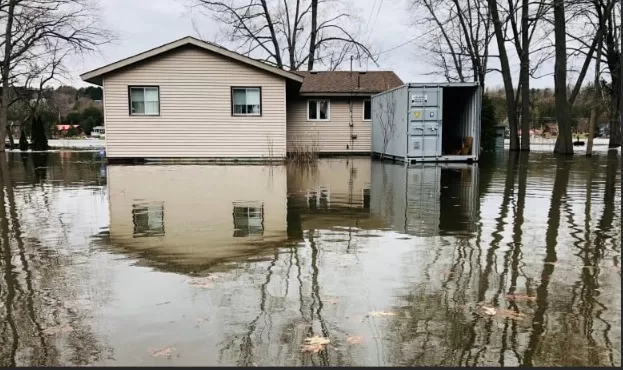Yard No-Grow List: Plants to Avoid in Your Landscape. For many individuals, their home represents a sanctuary where they feel the utmost safety. However, it is essential to recognize that Home Safety encompasses various factors, as potential dangers can emerge from multiple sources.
These hazards encompass a broad spectrum, ranging from structural concerns like termites and faulty wiring to location-specific issues such as drainage and flooding. By familiarizing yourself with these 11 common hazards, you can take proactive measures to safeguard your home effectively.
The Lethal Consequences of Lead: Protecting Children and Pets from the Hazards of Lead Paint

Lead paint poses a grave danger, particularly to the well-being of children and pets.
Its toxic nature is widely acknowledged, and homes constructed prior to 1980 are likely to harbor this hazardous substance. To ensure the safety of your loved ones, it is imperative to take proactive measures.
Employing test kits can help determine the presence of lead within your dwelling, but it is strongly recommended to enlist the services of a certified professional for the thorough and proper removal of this harmful material from your household.
.
Enhancing Indoor Air Quality: Alleviating Allergies and Asthma for a Healthier Living Environment
.
Achieving optimal indoor Air Quality is paramount in mitigating the adverse effects of allergies and asthma.
Making conscious choices when it comes to flooring materials, such as opting for hardwood or laminate instead of carpeting, can significantly reduce the presence of allergens. Additionally, investing in an air-filtration system or upgrading to a new air conditioner can effectively control and minimize airborne allergens within your home.
Harnessing the power of nature, incorporating houseplants not only enhances indoor air quality but also uplifts your overall well-being, positively impacting your mood and creating a harmonious living space.
Enhancing Indoor Air Quality: Alleviating Allergies and Asthma for a Healthier Living Environment

Achieving optimal indoor air quality is paramount in mitigating the adverse effects of allergies and asthma.
Making conscious choices when it comes to flooring materials, such as opting for hardwood or laminate instead of carpeting, can significantly reduce the presence of allergens. Additionally, investing in an air-filtration system or upgrading to a new air conditioner can effectively control and minimize airborne allergens within your home.
Harnessing the power of nature, incorporating houseplants not only enhances indoor air quality but also uplifts your overall well-being, positively impacting your mood and creating a harmonious living space.
Navigating the Perils of Rising Waters: Safeguarding Your Home against Flooding
Flooding stands as one of the most prevalent threats that homeowners face, irrespective of their geographical location.
Whether triggered by heavy rainfall, snowmelt, or even a ruptured pipe in the basement, water intrusion poses a serious risk. To ensure the safety of your property and loved ones, it is essential to be prepared for such scenarios.
If your home is situated in a flood-prone region or an area with a high water table, taking proactive measures becomes even more critical.
One vital component of flood preparedness is maintaining a well-functioning sump pump. This device plays a crucial role in effectively managing excess water and preventing extensive Water Damage.
Regularly inspect and ensure the proper functioning of your sump pump to provide reliable protection against rising water levels.
By proactively addressing the potential risks of flooding and investing in necessary precautions, you can fortify your home’s resilience against the destructive force of rising waters.
Prioritizing flood preparedness will not only safeguard your property but also offer you peace of mind during unpredictable weather events.
Shielding Your Home from Termites: Proactive Measures for Prevention and Protection

Termites, the silent destroyers of homes, pose a significant threat to the structural integrity of your property.
Safeguarding your investment requires vigilance and timely action to prevent infestations before they occur. Engaging the services of a professional termite inspector on a regular basis is crucial in detecting any signs of termite activity and addressing them promptly.
Prevention is the key to saving valuable time and money in dealing with termite-related issues.
Termites are particularly attracted to damp wood, making it essential to address and repair indoor leaks promptly. By resolving water leaks and maintaining proper ventilation, you can create an environment that is less appealing to these destructive pests.
Additionally, it is important to be mindful of the storage of firewood.
Keeping firewood near your home’s foundation or crawl space provides termites with easy access to potential entry points. To minimize the risk of termite infestation, store firewood away from your home, elevated from the ground, and at a reasonable distance from the foundation.
By adopting a proactive approach and implementing these preventive measures, you can fortify your home against termite damage and preserve its structural integrity for years to come.
*The information is for reference only.